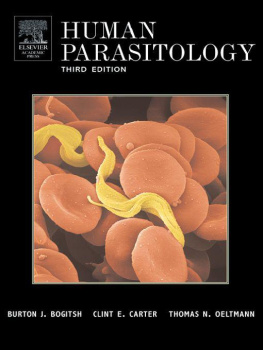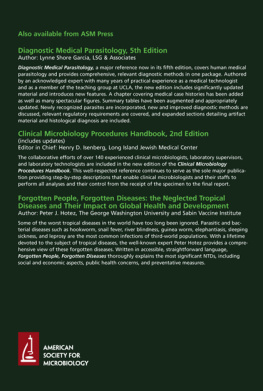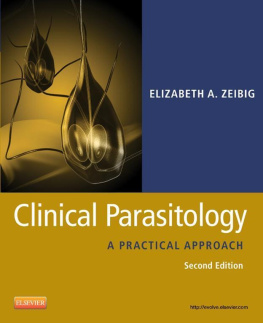Table of Contents
Acquisitions Editor: Nancy Maragioglio
Associate Acquisitions Editor: Kelly Sonnack
Publisher: Dana Dreibelbis
Project Manager: Kyle Sarofeen
Composition: SNP Best-set Typesetter Ltd.
Cover Design: Susan Shapiro
Text Printer: Maple-Vail Book Manufacturing Group
Cover Printer: Phoenix Color Corporation
Elsevier Academic Press
30 Corporate Drive, Suite 400, Burlington, MA 01803, USA
525 B Street, Suite 1900, San Diego, California 92101-4495, USA
84 Theobalds Road, London WC1X 8RR, UK
This book is printed on acid-free paper.

Copyright 2005, Elsevier Inc.
All Rights Reserved.
No part of this publication may be reproduced or transmitted in any form or by any means,
electronic or mechanical, including photocopy, recording, or any information storage and retrieval
system, without permission in writing from the publisher.
Permissions may be sought directly from Elseviers Science & Technology Rights Department in
Oxford, UK: phone: (+44) 1865 843830, fax: (+44) 1865 853333, e-mail:
permissions@elsevier.com.uk. You may also complete your request online via the Elsevier
homepage (http://elsevier.com), by selecting Customer Support and then Obtaining
Permissions.
Library of Congress Cataloging-in-Publication Data
Bogitsh, Burton J. (Burton Jerome)
Human parasitology / Burton J. Bogitsh, Clint E. Carter, Thomas N.
Oeltmann.3rd ed.
p. cm. Includes index.
ISBN 0-12-088468-2 (alk. paper)
1. Medical parasitology. 2. Parasitic diseases. I. Carter, Clint E. (Clint Earl) II. Oeltmann, Thomas N. III. Title.
QR251.B47 2005 616.96DC22 2005001888
British Library Cataloguing in Publication Data
A catalogue record for this book is available from the British Library
ISBN: 0-12-088468-2
For all information on all Elsevier Academic Press publications
visit our Web site at www.books.elsevier.com
PRINTED IN THE UNITED STATES OF AMERICA
05 06 07 08 09 9 8 7 6 5 4 3 2 1
Dedicated to the memory of Mafoi C. Bogitsh, who
was the wind beneath my wings.
BJB
Preface to the Third Edition
Several years ago we recognized the need for a textbook of human parasitology designed specifically for premedical, medical technology, and biology students who required basic knowledge of the biology of parasitism, and we began to consider collaborating on such a text. As the idea germinated, we decided that, while emphasizing the medical aspects of the topic, the book should incorporate sufficient functional morphology, physiology, biochemistry, and immunology to enhance appreciation of the diverse implications of parasitism. It would also explore the potential of certain parasites for producing morbidity and mortality and would present available data regarding the modus operandi of certain modern chemotherapeutic agents. Through considerable discussion and several revisions of the manuscript, the first edition of Human Parasitology evolved. One of the goals for Human Parasitology was that it would serve as a bridge between classical clinical parasitology texts and the more traditional encyclopedic, advanced treatises that include in-depth consideration of biochemistry and immunology as well as more exotic parasites, such as strigeids of fishes, amphibians, and birds.
In this era of expanded use of radiation therapy and immunosuppressive drugs to treat cancer, tissue rejection in organ transplants, and AIDS, all of which serve to reduce immunocompetency in the human host, a number of parasites, some of which were formerly considered inconsequential, have become life-threatening. The subject of opportunistic parasites was introduced in the second edition of Human Parasitology and is expanded in the third edition. Intrinsic to the study of opportunistic parasitism is the topic of immunology. Accordingly, we have expanded the treatment of this subject in the third edition in a manner that we feel is understandable to the beginning student. We have also added a section in which the immune response of an individual host is discussed relative to the parasite in question. The marked increase in world travel, immigration, and conflicts has made it imperative that students preparing for careers in the allied health sciences, medicine, and public health, as well as those interested in various aspects of environmental studies, acquire a working knowledge of parasitic diseases and how they affect their human hosts. In addition, the increased introduction of foodstuffs from countries throughout the world has increased the occurrence of several parasites that have hitherto been rarely seen in the country. To that end, we have included expanded coverage of such topics as waterborne parasitic diseases and food-borne zoonoses.
So as not to diminish the importance of the biological aspects of parasites, the opening chapter of the portion devoted to each major group of parasites is entitled General Characteristics. These introductory chapters deal with the evolution and biology of each group and include ample light and electron micrographs to illustrate the various points of the text. An abridged classification of parasites covering the major nomenclature of only those forms discussed in the text has been placed at the end of each chapter. Also at the end of each chapter is a section entitled Selected Readings. We have attempted to list a few significant publications that present some in-depth information on selected topics pertinent to the topics discussed in the chapter. This section is not intended to present an updated literature for research or graduate studies. Indeed, the reader may find some classical reports as well as more recent citations.
The field of chemotherapy is advancing at such a rapid pace that new drugs and regimens become available continually. Consequently, sections of the book dealing with information about current drugs of choice as well as regimens will possibly become obsolete more rapidly than other sections of the book. Nevertheless, in the individual sections and at the end of the book, specific, currently prescribed chemotherapeutic regimens are included and may prove useful to prospective medical students.
During the past few years, a number of essentially unheralded protozoans such as Cryptosporidium parvum and Cyclospora cayentanensis have become public health problems. We have not attempted to identify and discuss all parasites that have been reported in humans, concentrating instead on only those considered to be of major significance.
Because the third edition, as previous editions, is designed for a one-semester course, the material is somewhat condensed, particularly in the areas of physiology and biochemistry. We believe this edition will appeal particularly to those students interested not only in the medical aspects of parasitology but also to those who require a solid foundation in the biology of parasites in order to further their studies in a graduate school of their choice.
Preface to the Second Edition
Several years ago, we recognized the need for a textbook of human parasitology designed specifically for premedical, medical technology, and biology students who required basic knowledge of the biology of parasitism, and we began to consider collaborating on such a text. As the idea germinated, we decided that, while emphasizing the medical aspects of the topic, the book should incorporate sufficient functional morphology, physiology, biochemistry, and immunology to enhance appreciation of the diverse implications of parasitism. It would also explore the potential of certain parasites for producing morbidity and mortality and would present available data regarding the modus operandi of certain modern chemotherapeutic agents. Through considerable discussion and several revisions of the manuscript, the first edition of Human Parasitology evolved. One of the goals for Human Parasitology was that it would also serve as a bridge between classical clinical parasitology texts and more traditional encyclopedic, advanced treatises that include in-depth consideration of biochemistry and immunology as well as more exotic parasites, such as strigeids of fishes and birds.












